
Browse an alphabetical list of photographs. These historical images portray people, places, and events before, during, and after World War II and the Holocaust.
<< Previous | Displaying results 826-850 of 2641 for "Photo" | Next >>
Entrance to the Ploetzensee prison. At Ploetzensee, the Nazis executed hundreds of Germans for opposition to Hitler, including many of the participants in the July 20, 1944, plot to kill Hitler. Berlin, Germany, postwar.
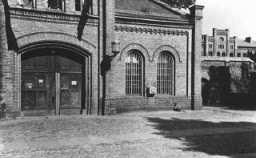
Entrance gate to the Riga ghetto. This photograph was taken from outside the ghetto fence. Riga, Latvia, 1941-1943.
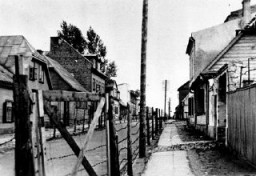
Entrance to the Riga ghetto. Riga, Latvia, 1941–43. During the Holocaust, the creation of ghettos was a key step in the Nazi process of separating, persecuting, and ultimately destroying Europe's Jews.
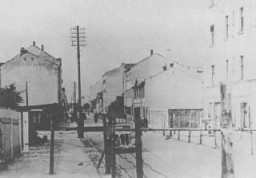
View of a tunnel entrance to the rocket factory at the Dora-Mittelbau concentration camp, near Nordhausen. Germany, April-May 1945.

Entrance to the Warsaw ghetto. The sign states: "Epidemic Quarantine Area: Only Through Traffic is Permitted." Warsaw, Poland, February 1941.

Jewish displaced persons (DPs) enter the main gate of the Ziegenhain DP camp, September 1946.
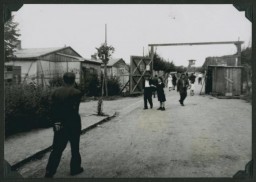
Identification picture of Erich Mühsam taken in the Oranienburg concentration camp. Mühsam, an anarchist and a pacifist, worked as an editor and writer; he was imprisoned during World War I for opposing the war. Arrested during the massive roundup of Nazi political opponents following the Reichstag fire (February 27, 1933), Mühsam was tortured to death in Oranienburg on July 11, 1934. Oranienburg, Germany, February 3, 1934.
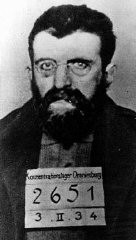
Portrait of Ernest Hemingway by Helen Pierce Breaker. Paris, France, ca. 1928. In 1933, Nazi students at more than 30 German universities pillaged libraries in search of books they considered to be "un-German." Among the literary and political writings they threw into the flames were the works of Ernest Hemingway.
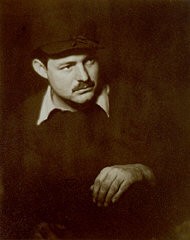
Author Ernest Hemingway aboard the boat Pilar, ca. 1950. In 1933, Nazi students at more than 30 German universities pillaged libraries in search of books they considered to be "un-German." Among the literary and political writings they threw into the flames were the works of Ernest Hemingway.
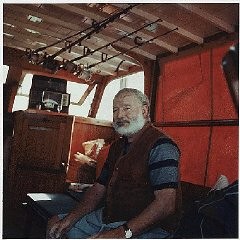
Defendant Ernst Kaltenbrunner during the International Military Tribunal at Nuremberg. He was Chief of the Reich Security Main Office (RSHA) and later Chief of the Security Police.
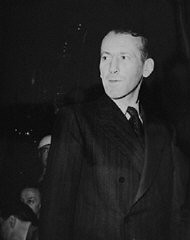
1943 photograph of SS General Ernst Kaltenbrunner, who served as head of the Reich Security Main Office (RSHA) and as chief of Nazi Security Police (Sipo) and the Security Service (SD).
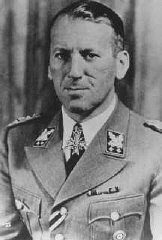
Ernst Toller, German dramatist and revolutionary, emigrated from Germany to other European nations and then to the United States. New York, United States, May 1939.
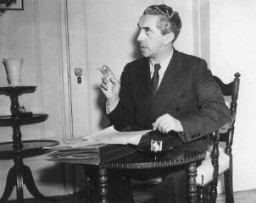
Lieutenant General (later Field Marshal) Erwin Rommel commanded German forces during the campaign in North Africa. Libya, 1941.
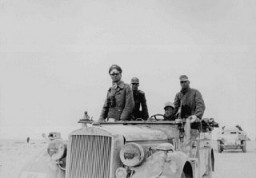
Jewish refugees from France and the Netherlands make their way from France into Spain through a pass in the Pyrenees mountain range. They are being rescued by "Dutch-Paris," an organization created by Seventh-day Adventist Johan Weidner. Ca. 1940.

Establishing racial descent by measuring an ear at the Kaiser Wilhelm Institute for Anthropology. Germany, date uncertain.
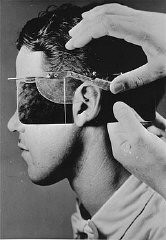
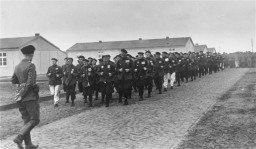
Photograph of Esther Lurie and a friend, Jose, who were both students at the Institute of Art in Brussels. Here they are enjoying refreshments on an outdoor terrace in the early 1930s. Lurie would later flee Europe as war became imminent. Brussels, Belgium, 1931–1933.
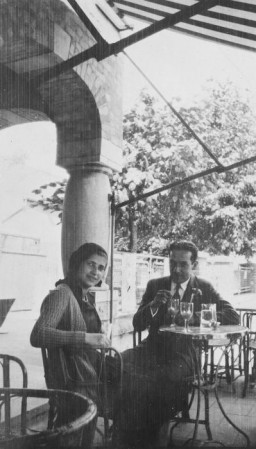
Visitors view the eternal flame in the Hall of Remembrance at the United States Holocaust Memorial Museum.
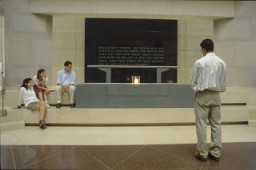
The American Eugenics Society displays an exhibit on health and eugenics at the Kansas Free Fair in 1929.
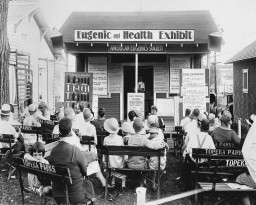
Eugenics poster entitled "The Nuremberg Law for the Protection of Blood and German Honor." The illustration is a stylized map of the borders of central Germany upon which is imposed a schematic of the forbidden degrees of marriage between Aryans and non-Aryans and the text of the Law for the Protection of German Blood. The German text at the bottom reads, "Maintaining the purity of blood insures the survival of the German people."
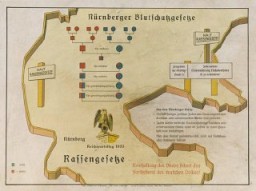
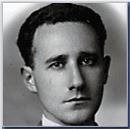
The last group of European Jewish refugees leaves a British detention camp for Israel. Cyprus, February 10, 1949.
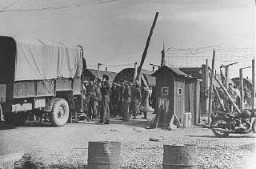
Eva, Alfred, and Leane Munzer. Infant Alfred survived in hiding; his sisters were discovered and killed in Auschwitz.
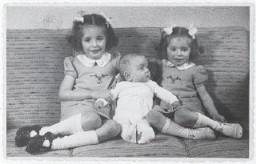
A color photograph of Eva Justin interviewing a Romani woman interned in a "Gypsy camp." Vienna, Austria, 1940. During the Nazi era, Dr. Robert Ritter was a leading authority on the racial classification of people pejoratively labeled “Zigeuner” (“Gypsies”). Ritter’s research was in a field called eugenics, or what the Nazis called “racial hygiene.” Ritter worked with a small team of racial hygienists. Among them were Eva Justin and Sophie Ehrhardt. Most of the people whom Ritter studied and…
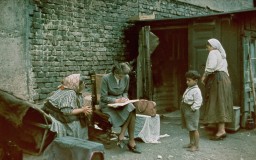
British Zionist leader Norman Bentwich (left) with Henri Berenger, French delegate to the Evian Conference on Jewish refugees. Evian-les-Bains, France, July 1938.

We would like to thank Crown Family Philanthropies, Abe and Ida Cooper Foundation, the Claims Conference, EVZ, and BMF for supporting the ongoing work to create content and resources for the Holocaust Encyclopedia. View the list of donor acknowledgement.